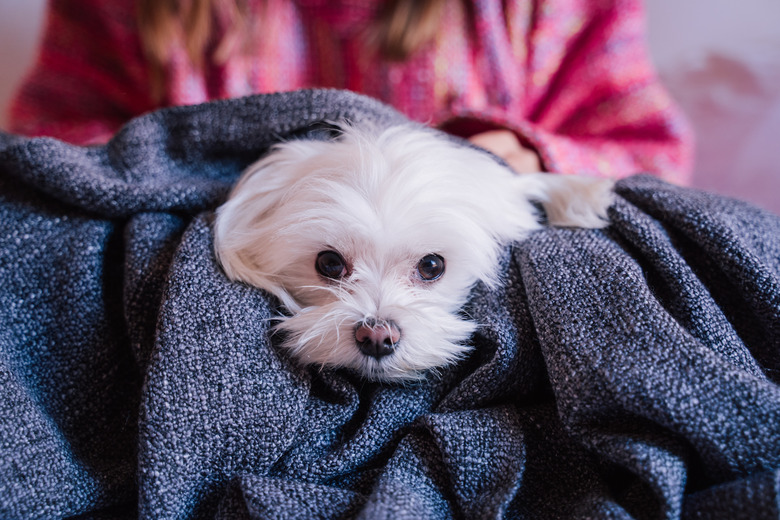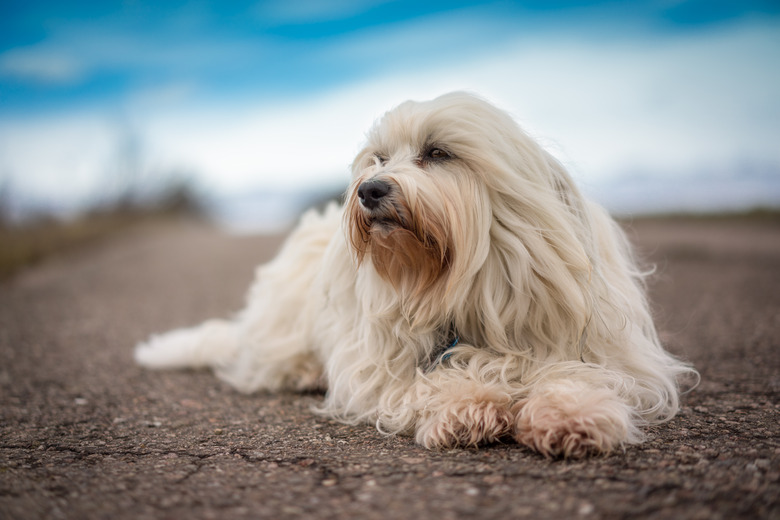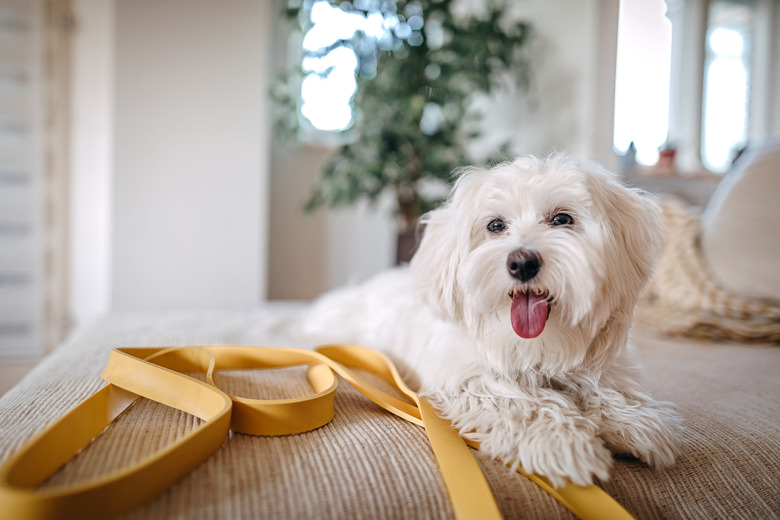How To Groom A Maltese Dog's Face And Avoid Tear Stains
Maltese dogs are known for their vibrant white coats and sweeping long locks. Unfortunately, that sparkling white coat needs regular grooming to keep it clean and free of debris. Plus, Maltese pups are prone to developing tear stains due to a variety of eye conditions that are common in this breed.
With daily grooming, though, your pup's face will stay beautiful and bright. And regular cleaning of her eyes will ensure they stay free from tear stains.
Create a Maltese grooming routine
Create a Maltese grooming routine
All dogs learn best with consistency and it's much easier to clean your dog's eye area when stains aren't allowed to become ingrained into the fur — miss a couple of days and the stains are difficult to remove again. The best time to start is right after your dog has been professionally groomed. The hair around the eyes will be short and clean, so you want to maintain that grooming as much as possible.
Pick a spot for your daily grooming and have everything you need close by in one place. You'll need a towel or pad for your dog to sit on and a plastic container with the daily grooming supplies and treats. Having everything in one spot makes it easy to grab and take along when you travel with your pup.
Grooming Maltese faces
Grooming Maltese faces
Grooming Maltese faces is a daily task for owners because food stains and tear stains can quickly become unsightly if left alone. First, soak a cotton ball with a sterile saline solution or a dog-specific eye cleaning solution. Start at the inner part of the eye closest to the nose and wipe out towards the ear. Then get a new wet cotton ball and wipe the other eye. Give a small treat after each eye is cleaned to positively reinforce the grooming process for your dog.
Wipe the mustache hair under the eyes with a new wet cotton ball or washcloth, wiping down and away from the eyes. By doing this, you are removing any eye debris and food that collected between the eyes and mouth. You can also apply dog-safe solutions for whitening the hair in this area. Be careful not to get the solution in the eyes. Give a small treat as a reward so your dog associates grooming with good things.
If there is a lot of caked-on debris, hold the cotton ball over the stained area to get it really wet. This loosens the debris collected there.
Trimming and combing the face
Trimming and combing the face
During your grooming sessions, if you notice any stubborn tear stains or debris on your dog's face, you can use a flea comb to help remove them. Wet the comb with water or saline solution and gently comb the mustache area around the eyes to smooth it down. This is a sensitive spot, so be gentle and don't pull at any knots you find.
Trim knots out from the fur of the face with pet grooming scissors that have rounded ends so you don't accidentally injure your dog if he jerks away or tries to bite. Hair can irritate the eyes, contributing to tear stains, so keep it short around your pup's eye area. Reassure your dog and tell him how well he's doing during the grooming process.
To keep your dog's eye area dry and free from tear stains after grooming, mix together equal parts boric acid and cornstarch and work it into the fur around the eyes. The boric acid lightens the fur and the cornstarch absorbs moisture.
Tear-staining in Maltese dogs
Tear-staining in Maltese dogs
Tear-staining is a big problem in Maltese dogs. You should always take your dog to the veterinarian to make sure there are no medical eye problems such as blocked tear ducts, entropion, glaucoma, allergies, infections, or other issues that need to be addressed by a veterinarian. If you are breeding your Maltese, make sure that genetics do not play a role in tear staining as well.


